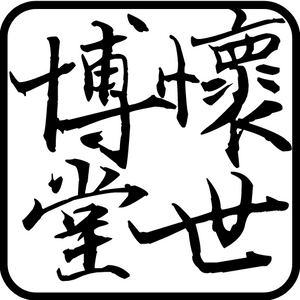The Sculptural Art of China
When Chinese Art first entered the consciousness of the Western world, it was the porcelain which aroused the greatest interest. Splendid collections were formed in Europe, notably by the 18th century August the Strong, king of Saxony, which assembled a remarkable collection in his palace in Dresden, and by the French Court which put together an outstanding group of these porcelains. Chinese ceramics also inspired the Dutch potters of Delft and later on the first porcelains at Meissen, Chantilly, and also Chelsea. As far as sculpture is concerned, the only things that excited great enthusiasm were the small, decorative porcelain figurines which were not only much admired, but were also imitated by European manufacturers.
As the full range of Chinese art became better known in the West, museums and private collectors began to buy different kinds of works. What was valued above all was the painting, which the Chinese themselves had always ranked first, and the ancient bronzes and jades. There were, of course, various sculptures among the latter. The most sought after were the jade carvings and the animal-shaped bronze vessels from the Shang, Zhou, and Han period and from the Ming and Qing dynasty, the elaborately carved jade figures of all types and the decorative porcelains and enamels. All these were very popular with nineteenth century collectors.

Wooden Bodhisattva from the Northern Song Period (no.21)
The idea that Chinese sculpture is a major art form to be ranked among the great sculptural traditions of the world is a twentieth century phenomenon, for it was under the influence of modern art that more abstract forms became popular. The pioneer in this field was the Swedish scholar Osvald Siren who published his four volume Chinese Sculpture from the Fifth Century to the Fourteen Century in 1925 and included detailed discussions of this form in his various books on Chinese art.
Other scholars who wrote on this subject are Leigh Ashton, the author of Introduction to the Study of Chinese Sculpture, which appeared in 1924, d'Ardenne de Tizac who published La Sculpture Chinoise in 1931 and Otto Fischer whose Chinesische Plastic came out in 1948. Excellent books dealing with the great cave temples of northern China were also produced by the Japanese, most notably the monumental studies of the cave temples at Yungang, Longmen, and Xiang Tang Shan by Matsubara and Mizuno. More specialized studies were produced by the present author in his Chinese Buddhist Bronzes, and Ezekiel Schloss who devoted a lengthy study to Chinese ceramic sculptures, emphasizing the figures of the Han, Six Dynasties, and Tang period, and Alfred Salmony who wrote extensively on Chinese jade, particularly those of ancient China.

Rare Stone Stele Dated 535 (No.3)
With the growing interest in the sculptural art of China, leading museums began collecting and pushing catalogues of Chinese sculptures. Among these institutions, the most active was probably the Nelson Gallery under Laurence Sickman, who first as Oriental curator and later as director, was able to put together a large collection of superb examples of Chinese art. Many of the best pieces appear in The Art and Architecture of China, a work by Laurence Sickman and Alexander Soper which came out in 1956.
Even larger was the great collection of Chinese sculpture which Alan Priest assembled for the Metropolitan Museum in New York and in 1944 published an excellent catalogue. Less well known but also outstanding is the group collected by Horace for the University Museum in Philadelphia which was included in his catalogue of the Museum's collection of Chinese art issued in 1941.
Fine examples of Chinese sculpture are also found in the Boston Museum of Fine Art, the Fogg Museum, the Cleveland Museum, the Chicago Art Institute, the San Francisco Asian Art Museum, and there are also many remarkable collection in European and Japanese museums. It was probably the English critic, Roger Fry, who first drew attention to the aesthetic quality of this art and now no account of sculpture would be complete without a discussion of this remarkable tradition.

Very Rare Large Votite Stele of Seated Buddha (No. 9)
Although porcelains are still the most sought after forms of Chinese art, Chinese sculpture has become increasingly important and outstanding examples have brought very high prices. Pioneers among the dealers who featured Chinese sculpture are Giuseppe Eskenazi in London who issued major catalogues in his Chinese sculpture exhibitions in 1978, 1981, and 1990, and Michael Weisbrod in New York who has shown fine examples of Chinse sculpture in various shows, culminating in an extensive exhibition in the spring of 1992 which is accompanied by a handsome catalogue. Its emphasis is on Chinese Buddhist sculpture with outstanding examples of stone carvings from the Wei and Tang dynasties, a period which is regarded as the high point of Chinese carvings.
Noteworthy pre-Tang dynasty examples are the stele dating from 535 (no. 3) sold and now in the collection of the Herbert F. Johnson Museum, Cornell University, a very impressive large stele of northern Qi or Sui (no. 9) (now in a private collection and available for purchase). A fine example of Tang dynasty is represented by the limestone torso of Guanyin (no. 14). But the Chinese sculpture did not limit himself to stone, and perhaps the finest piece is a wooden Bodhisattva from the Northern Song period (no.21). Of the works of clay, the loveliest is a Tang grace figure of a camel (no.32), while in the jade works, the Ming horse and monkey (no.41), is outstanding. All in all, this is a rich and varied show.
Originally authored by Dr. Hugo Munsterberg.
Published and adapted by Michael B. Weisbrod, Inc.,1992.
